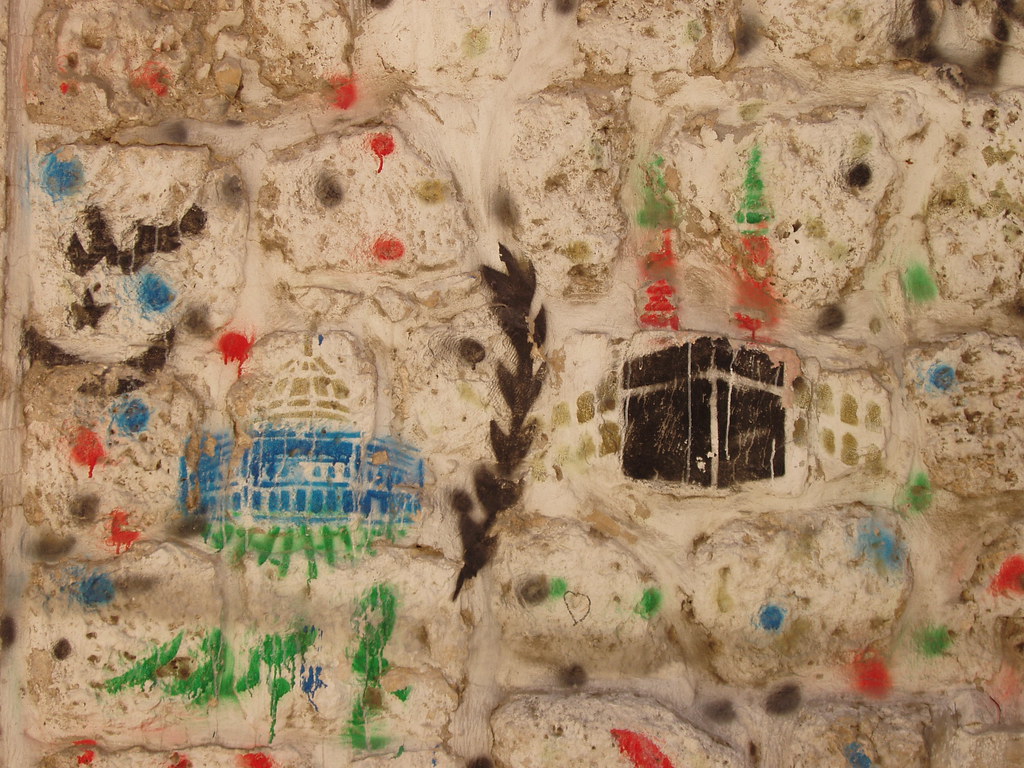We are on a bus in stop-and-go traffic that makes my stomach turn – we are saved from crashing into a suddenly-merging car by some miracle every three-and-a-half minutes or so. We have packed lightly. We do not have movies to watch and our cell phone internet is spotty – our test is to make the time pass meaningfully, we tell ourselves. We pause to reflect on our gratitude: The A/C runs on high as respite from the heat outside. We are provided water bottles.
If this was a year ago we would be on on Hajj in Saudi Arabia, but at this moment we are passing Newark, New Jersey on a bus to the Washington, D.C. area. None of the men on the bus are dressed in the towel-like attire that composes the ehram, their heads are not shaved and the women on the bus are not in varying shades of abayas and headscarves.
But we dive back like this often to Hajj not as a destination that you could traverse in the same plane, but as another dimension of sorts. It can happen anywhere – when the workday ends and more than a dozen residents are crowded around the elevators of our apartment building, we think back to factoring in an extra 20 minutes to and from the hotel lobbies to our rooms. The same for the escalators at train stations — waiting your turn amidst the pool of sojourners at the bottom: I’m transported instantly to the mall in Mecca, where it could take close to an hour to get from the ground floor to 3 stories up to the food court.
Waiting – finding ways to wait meaningfully – was a big part of the experience. We’d read Quran, pray for those who’d sent their heartfelt prayers to us, thumb our prayer beads, at some points recite the chants in unison: Labbayka Allaahumma labbayk, labbayka laa shareeka laka labbayk (O Allah, here I am. Here I am, You have no partner, here I am.)
Waiting – finding ways to wait meaningfully – was a big part of the experience.
And sleep. You had to catch up where you could.
Those ways that we’re transported back to Hajj — it could be as minor as your feet on wet grass that take you back to the turf in Mina, where the ends of your abaya were always soaked thanks to the ice melting in the drink coolers near the tents, or as big a test as needing your entire willpower to let go of your anger at a situation – in all those ways, we do Hajj every day. When we try to think the best of people who don’t seem to want to give you any reason to. When we feel helpless, hopeless and can’t see the path forward but cling to our faith that whatever is now and whatever is ahead is for the best.
In that way, going to Hajj feels relatively easy. You’re in a place where your religion and its history feel so close, and so real, and you’re surrounded by a group that has become your family, and you support each other on this journey together.
But when Hajj in Saudi Arabia is done – when you go back to your daily life, the real tests begin. They begin as soon as you get to the airport. Of patience. Of mercy. Of letting go. Of overcoming despair. Trying to hold on desperately to the sincerity of your practice at Hajj and bringing it back to a world that seems to throw every obstacle your sincerity’s way. When you’re not physically immersed in Hajj, you have to fight to be spiritually so. And time after time you will lose.
But when Hajj in Saudi Arabia is done – when you go back to your daily life, the real tests begin.
That’s why, a year out, I am thankful to be on this bus, to be forced to wait sometimes, to face things that are out of my control, to be transported, reminded, tested over and over — so that I may learn to let go, to trust in God, or to feel empowered and capable enough to make a change.
Sameea A. Kazi is a journalist based in New York City.
Photo Credit




